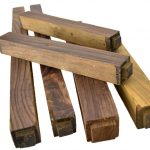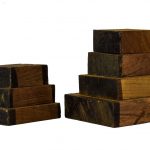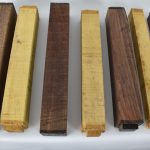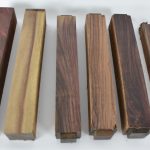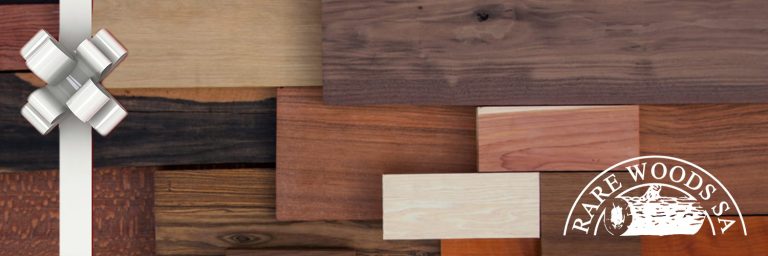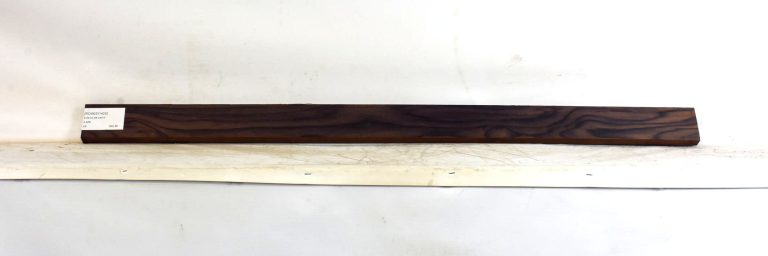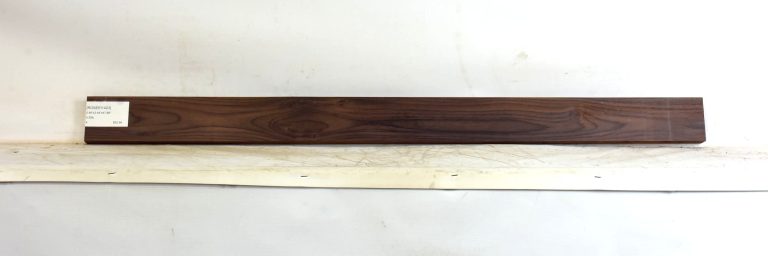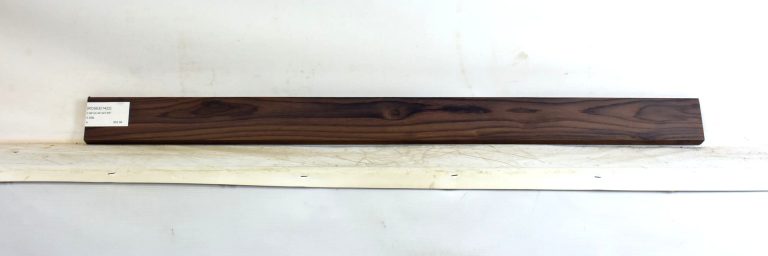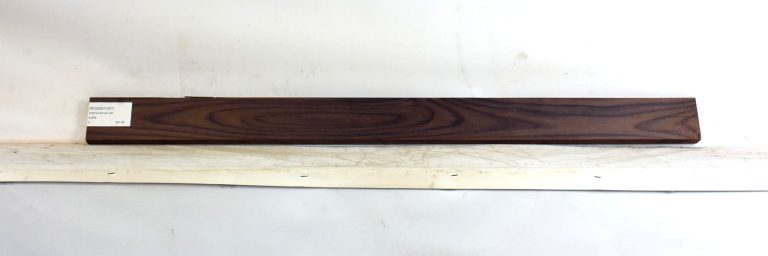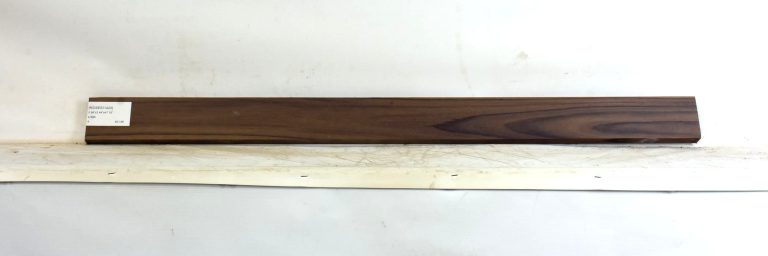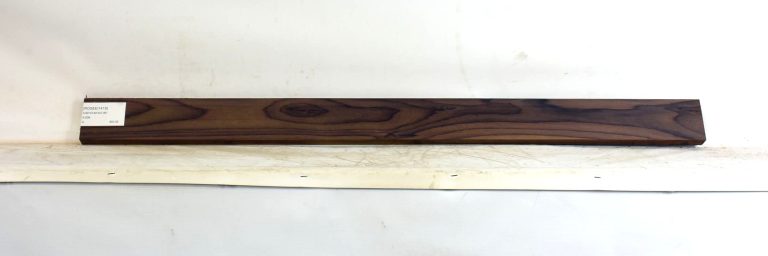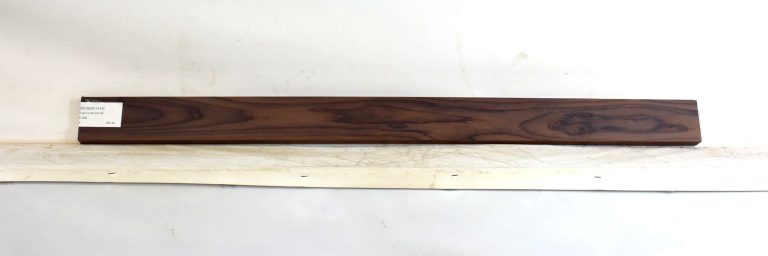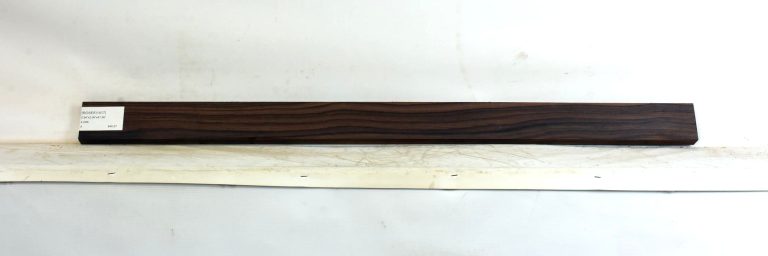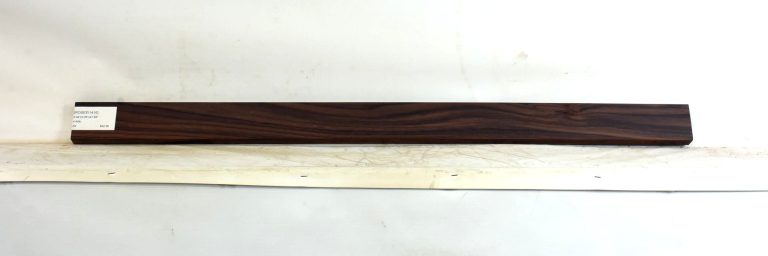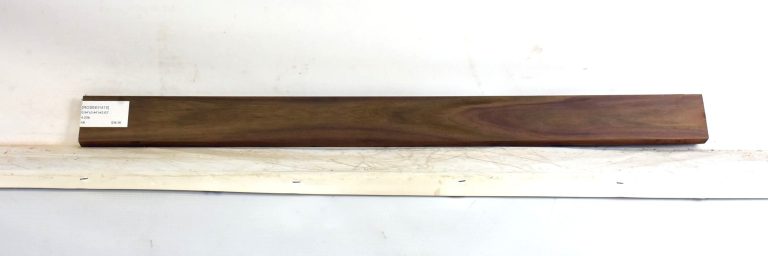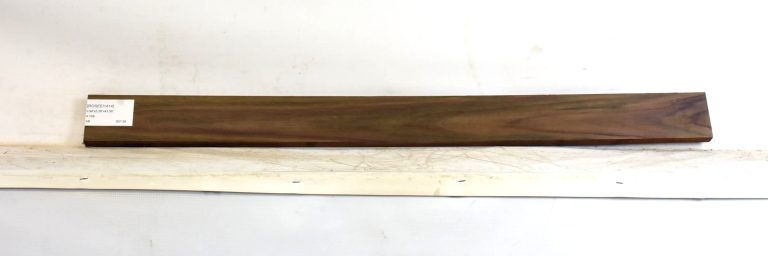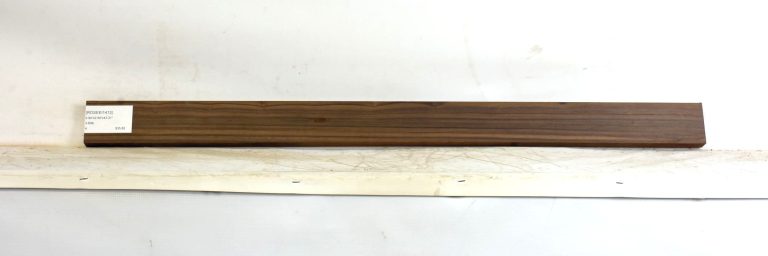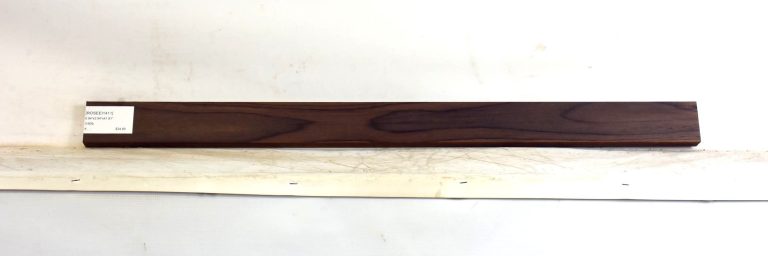Rosewood – East Indian
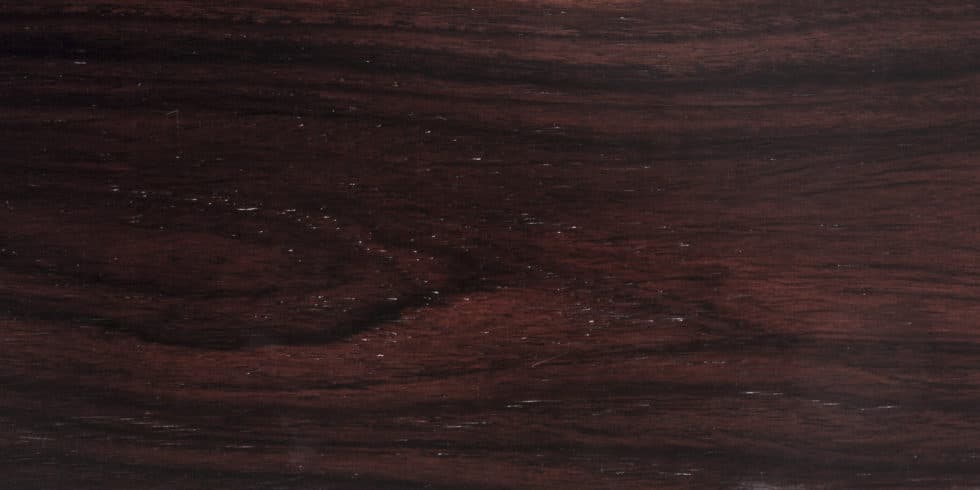
East Indian Rosewood can vary greatly in color. Although its base color is mostly always brown, the shades can range from golden brown to purplish or dark reddish brown. Secondary colors are often present. The wood’s colors will darken with continued UV exposure. East Indian Rosewood is generally less dense than most other rosewoods. Its grains are typically interlocked (although they can be irregular or straight), which can make it difficult to work. Care must be taken when finishing the wood, as it is not uncommon for the wood’s natural resins to impose if it is not first sealed. It has a medium texture.
Since the exportation ban on Brazilian Rosewood, more than twenty years ago, it has become a popular substitute with corporate guitar manufacturers (electric and acoustic, alike) — due in large part to its historically steady supply and relatively low cost (compared with other Dalbergia’s). By comparison to Brazilian Rosewood, its pores are smaller, but it is also a very durable wood that’s not overly susceptible to bug damage/infestation and it is considered stable after drying.
Don’t confuse this species with Sissoo (Dalbergia sissoo) which can also be referred to as¬† “Indian Rosewood” in certain locales. It is believed that Sonokeling: a true Dalbergia indigenous to Indonesia — where it is also known as “Jacaranda” is also Dalbergia latifolia, however tree farmers in Indonesia are not in agreement with this assessment. Our research into Indonesia and the cultivation of rosewood trees there revealed that back in the 1700’s, while the Indonesian islands were considered a colony of Holland, Dutch merchant colonists transplanted two major Dalbergia’s to Indonesia: Dalbergia Nigra (Brazilian Rosewood), from Brazil, and Dalbergia sissoo (Indian Rosewood), from India.¬† This could well be a botanical mystery worthy of further investigation for the detail oriented student of the Dalbergia genus.
Listed in CITES Appendix II — part of the Dalbergia -genus worldwide exportation ban — and is classified as “Vulenerable” on the IUCN Red List of Threatened Species.
Why We Love This Wood
A gorgeous, readily available, more affordably priced alternative to Brazilian Rosewood for use as a tone wood.
Client Creations
Quick Look

A Popular Choice in
Vital Statistics
| Main Color Group | Variegated |
| Grain Pattern | Pronounced |
| Avg Dry Weight - LB/BF | 4.3 |
| Avg Dry Weight - KG/M3 | 830 |
| Janka Hardness - LBF | 2440 |
| Janka Hardness - N | 10870 |
PRE-CUT SIZES (Rosewood – East Indian)
LUMBER PACKS (Rosewood – East Indian)
0 resultsTitle
Qty
Grade
Price
SHOP ALL (Rosewood – East Indian)
Browse SIMILAR lumber products by size, thickness, type or price
Search With Filters
$35.82
ALSO AVAILABLE (Rosewood – East Indian)
Description
Grade
UOM
Price
6/4 Lumber

